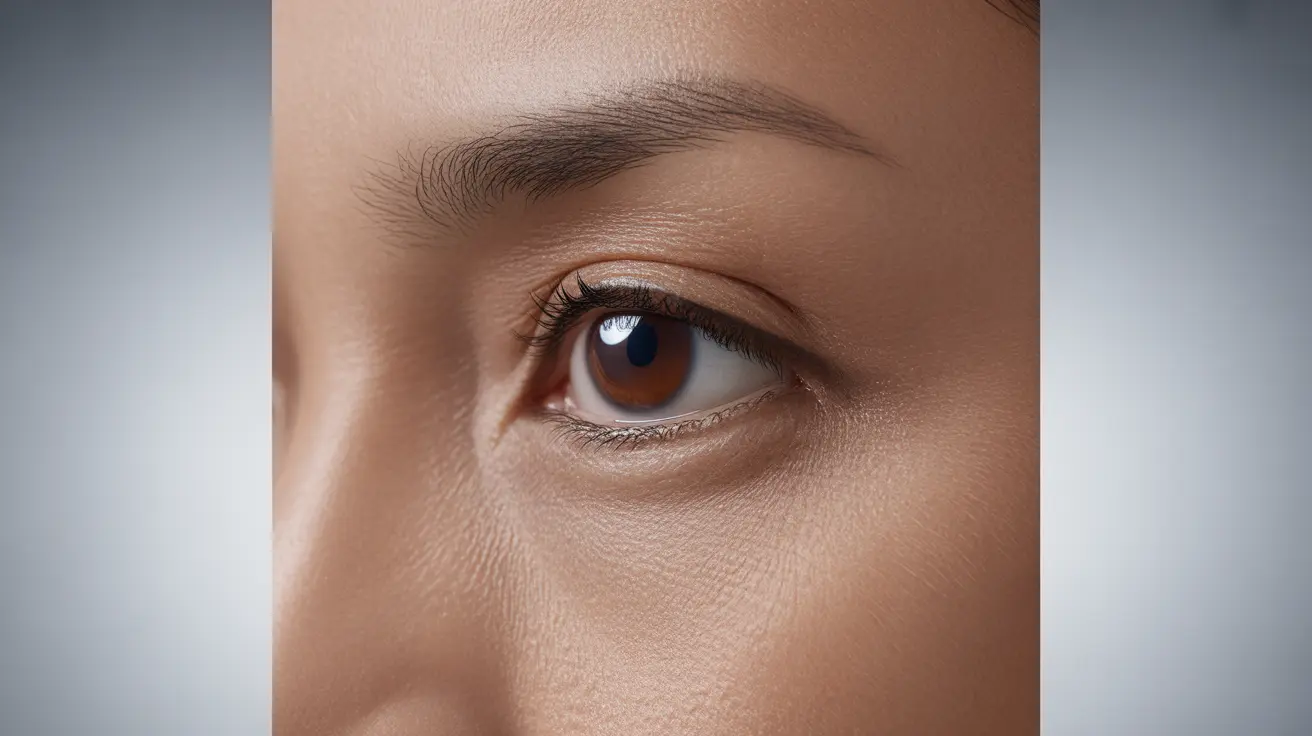Monolid eyes, characterized by the absence of a visible crease in the upper eyelid, are a beautiful and common natural eye shape that affects millions of people worldwide. This distinctive feature creates a smooth, continuous appearance from the eyebrow to the eyelash line, contributing to unique facial characteristics and expressions.
Understanding monolid eyes goes beyond mere aesthetics – it's about appreciating natural diversity in human features and learning how to enhance and care for this specific eye shape. Whether you're curious about the science behind monolids or seeking practical beauty advice, this comprehensive guide will address your key questions.
The Science Behind Monolid Eyes
Monolid eyes result from specific anatomical variations in the upper eyelid structure. Unlike double eyelids, which have a visible crease formed by an attachment between the levator muscle and skin, monolids feature a different arrangement of facial tissues and fat deposits that creates a seamless appearance.
This natural variation is determined by genetics and develops during early fetal development. The presence or absence of an eyelid crease is primarily influenced by inherited traits that affect how the muscles and skin of the upper eyelid form and connect.
Cultural and Genetic Perspectives
Monolid eyes are most commonly found among East Asian populations, where they can occur in up to 50% of individuals. However, this feature can appear in people of any ethnic background, highlighting the wonderful diversity of human features.
The prevalence of monolids in certain populations is believed to be an evolutionary adaptation that may have provided protection against harsh weather conditions and bright sunlight in specific geographical regions.
Makeup Techniques for Monolid Eyes
Enhancing monolid eyes requires specific makeup techniques that differ from those used for double eyelids. Here are some expert-recommended approaches:
- Use eyeshadow gradients that create depth without relying on the crease as a guide
- Apply eyeliner strategically to make lashes appear fuller and eyes more defined
- Focus on highlighting the lash line to create natural-looking dimension
- Consider using waterproof products to prevent transfer due to lid contact
Understanding Surgical Options
While blepharoplasty (double eyelid surgery) is available for those who wish to create a visible crease, it's important to understand that monolids are a completely normal and beautiful variation of human anatomy. Any decision regarding surgical modification should be carefully considered and discussed with qualified medical professionals.
The procedure involves creating a permanent crease in the upper eyelid through various surgical techniques. However, many people are increasingly embracing their natural monolids and choosing to enhance them rather than alter them.
Frequently Asked Questions
What are monolid eyes and how do they differ from double eyelids? Monolid eyes lack a visible crease in the upper eyelid, creating a smooth appearance from eyebrow to lash line. Double eyelids have a visible fold or crease in the upper eyelid that creates a line when the eye is open.
Why do some people have monolid eyes and others have double eyelids? This variation is primarily genetic and develops during fetal development. It's determined by how the muscles and skin of the upper eyelid form and connect, which is influenced by inherited traits.
Can monolid eyes be changed or altered with cosmetic surgery? Yes, blepharoplasty (double eyelid surgery) can create a permanent crease in monolid eyes. However, this is a personal choice and should be carefully considered with medical professionals.
How should makeup be applied differently for monolid eyes compared to double eyelids? Makeup for monolid eyes focuses on creating dimension without relying on a crease. This includes using gradient eyeshadow techniques, strategic eyeliner placement, and emphasizing the lash line for definition.
Are monolid eyes more common in certain ethnic groups and what causes this variation? Monolid eyes are most prevalent in East Asian populations, affecting up to 50% of individuals. This trait is believed to have evolved as a protective adaptation to specific environmental conditions, though it can occur in any ethnic group.




